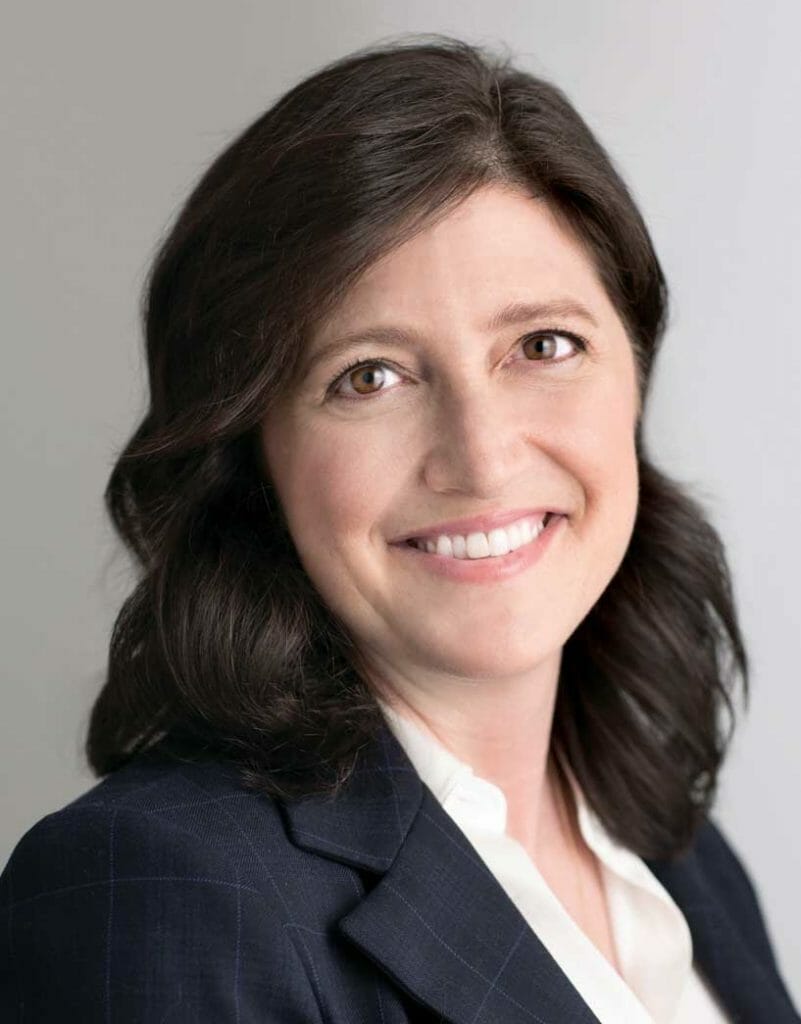August 13, 2024 - This interview, conducted by the LSTA’s EVP of Membership Lisa Schneider, was first published in the 2024 summer edition of Loans Magazine. The following is an edited version of the interview transcript.
First, welcome to the LSTA! It has been about 4 months since you joined us and I’m sure that it feels like you have been drinking from a fire hose. Just to level set for our membership, can you tell us a little bit about your background and what attracted you to the role of CEO & Executive Director?
I am thankful for my time and experience at JP Morgan – I am grateful for having had the opportunity to work for a first-class organization and with wonderful people during my nearly 23 years there as a CLO banker. As I embark on the next stage in my career, I am truly fortunate to once again be at a top-notch organization with incredibly talented and motivated individuals. I have always had the utmost respect for the LSTA and what it does for the corporate lending and CLO markets, having worked incredibly closely with the team on a number of CLO related matters over the course of 15 years, including credit risk retention, the Volcker rule and LIBOR transition. It was impressive to see how dedicated the staff, the board and broad membership are to furthering the mission of the LSTA. The opportunity to lead the LSTA is a once in a lifetime opportunity, putting you in a position to make a real difference in the corporate lending market. I believe that my experiences, skillset, institutional knowledge, relationships and passion for the corporate lending market provide a solid foundation from which I can lead the LSTA into the future.
20+ years at the same firm is unheard of these days! In your time there, I’m certain that you had your fair share of obstacles, challenges and ultimately, valuable lessons learned. What are some of the most relevant lessons learned from your time at JPM that you think will be most impactful in this seat?
While there are a great many things that I feel are valuable lessons learned from my time on the sell- side, I will pick a couple of the highlights which I feel will help guide me in the years to come at the LSTA.
Value of the team – virtually every project and transaction I worked on in my prior life was part of a broader team effort. Recognition of the team dynamics, its strengths and weaknesses, and how it manages through times of crisis are imperative for success. If everyone does not feel part of the team, you risk missing out on the fullest extent of their capabilities and contributions. It takes effort to foster the right team environment, but it is time and energy well-spent.
Understanding where you learn the most – having experienced a couple of major economics cycles / events, as well as more than handful of minor ones, I am a firm believer that you learn more in times of stress and volatility than any other point in your career. Once you can fully appreciate that aspect, you start to think of challenging environments (market, regulatory, etc.) not as ‘challenges’ but more so as ‘opportunities’ to further develop and deliver for your clients, and in our case, the corporate lending market and our members.
Positive attitude – perspective and attitude affects much more than people tend to realize, especially when working in collaborative and/or client facing environments. Coming in each day excited about the opportunities that await you is far better from a productivity and health (physical, mental) than arriving dreading the challenges before you.
Your point about learning the most during times of stress and volatility really resonates with me. Looking back at my time on the trading desk, that was definitely the case for me as well – especially when thinking about the financial crisis. Shifting to a rosier topic, what are you most energized/excited about in this role?
I would like to say ‘everything’, but I suspect our readers would like something more insightful!
One of the great things about the corporate lending market is that it is constantly evolving, and with the growth in private credit, as well as advancements in technology, there will certainly be a lot for us to do over the coming years. Being part of a market that continues to have so much potential for positive change is truly invigorating. The LSTA is at the forefront of a number of important market initiatives, and in our leadership position within the market we have a unique opportunity to work collaboratively across market participants and effect changes for the better. Additionally, we really do have an experienced and motivated team here at the LSTA who have worked very well together over the years to accomplish a tremendous amount on behalf of the corporate lending market and really differentiate themselves. Anytime you have an opportunity to work with such a talented group, it should be something to be excited about.
What are your top priorities for the LSTA over the next 12 months and what do you think will be most important in achieving those goals?
As I reflected upon where the market and the LSTA is today, I contemplated both where we have been successful in the past as well as where we would like to be over the next one, three and five years and beyond. A tremendous amount of time and effort has been spent over the past decade dealing reactively to existential concerns brought on following the GFC, and rightfully so. Now that many of these items have been brought to rest, it is time to pivot and focus on being proactive. In stepping in to the CEO & Executive Director role, my three top external priorities are private credit, technology and loan market operations. Each of these topics covers fundamental aspects of the corporate lending market where the LSTA, working with its board and its membership, can drive change and improvement. By focusing on these priorities, we will also be addressing some of the regulatory questions the market faces.
We are, by definition, a consensus-driven organization. For us to be successful in our mission, we need collaboration with our Board of Directors, as well as consensus from the broader corporate lending market. The LSTA can spearhead discussions, have tough conversations, play devil’s advocate on issues but ultimately we need the support of the market to enact the policies and changes best for the market.
Along those same lines, what do you think are the biggest headwinds facing both the market and the LSTA? What strategies will be most critical in overcoming these headwinds?
I am firm believer that if we act together with the market, there is no goal that will be unattainable for us. However, it will take deliberate focus of our time, energy and financial resources to achieve our goals. Being able to prioritize appropriately and recognize that we do have a lot of opportunity ahead of us, but we will not be able to accomplish everything at once. Strategically planning and attacking our objectives will allow us to accomplish more. We also need to remain flexible as an organization and a market – it’s great if everything plays out as we envisioned on day one, but that is rarely the case in the financial world. We need to expect the unexpected twists and turns, efficiently evaluate our options and plan of action, and pivot as necessary. Likewise, understanding and appreciating that each of our membership and market participants are very rationale within their own set of incentives. The sooner we see this, the more quickly we can work to find common ground and drive consensus amongst our stakeholders.
There has been quite a bit written about the importance of curiosity and learning outside of the workplace as a catalyst for sparking innovation and creativity. What do you do when you’re not working? What does a typical weekend look like for you?
While I have not always lived this way, I do believe you need a solid work-life balance for long-term mental and physical well-being. You can still work hard (and efficiently), but mindfulness of how your responsibilities and tasks add up and impact cognitive acuity and overall health.
With all that said, I feel I may frighten a few of you with my weekend schedule….
Wake-up on Saturday / Sunday typically occurs between 4.30 and 5.15. I like to get a workout started by 6.30 or 7.00, with the goal of finishing that first workout by 7.30 or 8.00. I use the additional pre-workout time to either read, catch-up on the news, or occasionally the stray residual task from the day before. Sunday mornings I dedicate the pre-workout time to getting ready for the week ahead at the office.
My children are both actively involved in sports. Since moving to the suburbs I have taken every opportunity I could to coach them and/or attend their games. Depending upon game/practice schedules, there are typically at least a couple of hours each day dedicated to my children’s extracurricular activities.
Either before or after sports, I like to go to the grocery store. I enjoy cooking and do not have the opportunity to cook for the family during the week, so I tend to make up for it on the weekends. Some days I will spend more time in the kitchen, others will be spent on the grill. But through all of it I am engaging with my family, getting the kids to help or try my creations, catching-up with my wife on the week, et cetera.
I usually reserve a bit of time (at least 20 minutes, although sometimes longer when I can) to engage in some hobbies. Both of my children started playing instruments which inspired me to do the same. I have been slowly teaching myself odd and ends on the guitar now. It is a good way to relax and decompress.
Family dinner is … a family affair on the weekends. We sit down on the earlier side so we can all eat together and enjoy each other’s company. Afterwards we generally start the wind down process for the kids and slowly but surely get them ready for bed.
Before I turn in for the night I generally like to try and read. Most recently its been some of Brian Greene’s books on cosmology and physics; sometime I veer into history as well, depending upon the mood.
I wouldn’t say that I’m “frightened” by your schedule but more in awe…That’s a very early start, Sean! As a parent of 2 teenagers myself, I couldn’t agree more with protecting sacred family time on the weekends – especially meals. They say that “the heart of the house is in the kitchen” for a reason and that’s definitely the case in my house as well.
A perhaps not-so-well-known fact is that you played Rugby college (as did I). There are often parallels made between office culture and team sports – what did you learn from your days on the Rugby pitch that have been most valuable throughout your career?
For me it has been teamwork and dedication to a common goal. Everyone on the pitch has an important role, everyone can make a tackle, everyone can score a try. It is recognizing those opportunities and being able to capitalize on them when they present themselves. But it always has to be for the betterment of the team, not just the person. For a team to work, you need folks to be good teammates – this does not mean they need to be best friends, but they need to work well together, understand what the goals of the team are, be prepared to help, know when to support one another and operate in a coordinated fashion.
This theme of teamwork is woven throughout our entire conversation, and I couldn’t agree with you more. Thanks so much for your time today – especially during what has been an exceptionally busy time. It’s an exciting time for all of us – I’m looking forward to this next chapter for the LSTA!






